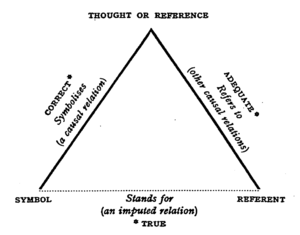The DARPA MEMEX project is now listed on its Open Catalog page!
Forty (40) separate components listed by team, project, category, link to code, description and license. Each sortable of course.
No doubt DARPA has held back some of its best work but looking over the descriptions, there are no bojums or quantum leaps beyond current discussions in search technology. How far you can push the released work beyond its current state is an exercise for the reader.
Machine learning is mentioned in the descriptions for DeepDive, Formasaurus and SourcePin. No explicit mention of deep learning, at least in the descriptions.
If you prefer to not visit the DARPA site, I have gleaned the essential information (project, link to code, description) into the following list:
- ACHE: ACHE is a focused crawler. Users can customize the crawler to search for different topics or objects on the Web. (Java)
- Aperture Tile-Based Visual Analytics: New tools for raw data characterization of ‘big data’ are required to suggest initial hypotheses for testing. The widespread use and adoption of web-based maps has provided a familiar set of interactions for exploring abstract large data spaces. Building on these techniques, we developed tile based visual analytics that provide browser-based interactive visualization of billions of data points. (JavaScript/Java)
- ArrayFire: ArrayFire is a high performance software library for parallel computing with an easy-to-use API. Its array-based function set makes parallel programming simple. ArrayFire’s multiple backends (CUDA, OpenCL, and native CPU) make it platform independent and highly portable. A few lines of code in ArrayFire can replace dozens of lines of parallel computing code, saving users valuable time and lowering development costs. (C, C++, Python, Fortran, Java)
- Autologin: AutoLogin is a utility that allows a web crawler to start from any given page of a website (for example the home page) and attempt to find the login page, where the spider can then log in with a set of valid, user-provided credentials to conduct a deep crawl of a site to which the user already has legitimate access. AutoLogin can be used as a library or as a service. (Python)
- CubeTest: Official evaluation metric used for evaluation for TREC Dynamic Domain Track. It is a multiple-dimensional metric that measures the effectiveness of complete a complex and task-based search process. (Perl)
- Data Microscopes: Data Microscopes is a collection of robust, validated Bayesian nonparametric models for discovering structure in data. Models for tabular, relational, text, and time-series data can accommodate multiple data types, including categorical, real-valued, binary, and spatial data. Inference and visualization of results respects the underlying uncertainty in the data, allowing domain experts to feel confident in the quality of the answers they receive. (Python, C++)
- DataWake: The Datawake project consists of various server and database technologies that aggregate user browsing data via a plug-in using domain-specific searches. This captured, or extracted, data is organized into browse paths and elements of interest. This information can be shared or expanded amongst teams of individuals. Elements of interest which are extracted either automatically, or manually by the user, are given weighted values. (Python/Java/Scala/Clojure/JavaScript)
- DeepDive: DeepDive is a new type of knowledge base construction system that enables developers to analyze data on a deeper level than ever before. Many applications have been built using DeepDive to extract data from millions of documents, Web pages, PDFs, tables, and figures. DeepDive is a trained system, which means that it uses machine-learning techniques to incorporate domain-specific knowledge and user feedback to improve the quality of its analysis. DeepDive can deal with noisy and imprecise data by producing calibrated probabilities for every assertion it makes. DeepDive offers a scalable, high-performance learning engine. (SQL, Python, C++)
- DIG: DIG is a visual analysis tool based on a faceted search engine that enables rapid, interactive exploration of large data sets. Users refine their queries by entering search terms or selecting values from lists of aggregated attributes. DIG can be quickly configured for a new domain through simple configuration. (JavaScript)
- Dossier Stack: Dossier Stack provides a framework of library components for building active search applications that learn what users want by capturing their actions as truth data. The frameworks web services and javascript client libraries enable applications to efficiently capture user actions such as organizing content into folders, and allows back end algorithms to train classifiers and ranking algorithms to recommend content based on those user actions. (Python/JavaScript/Java)
- Dumpling: Dumpling implements a novel dynamic search engine which refines search results on the fly. Dumpling utilizes the Winwin algorithm and the Query Change retrieval Model (QCM) to infer the user’s state and tailor search results accordingly. Dumpling provides a friendly user interface for user to compare the static results and dynamic results. (Java, JavaScript, HTML, CSS)
- FacetSpace: FacetSpace allows the investigation of large data sets based on the extraction and manipulation of relevant facets. These facets may be almost any consistent piece of information that can be extracted from the dataset: names, locations, prices, etc… (JavaScript)
- Formasaurus: Formasaurus is a Python package that tells users the type of an HTML form: is it a login, search, registration, password recovery, join mailing list, contact form or something else. Under the hood it uses machine learning. (Python)
- Frontera: Frontera (formerly Crawl Frontier) is used as part of a web crawler, it can store URLs and prioritize what to visit next. (Python)
- HG Profiler: HG Profiler is a tool that allows users to take a list of entities from a particular source and look for those same entities across a pre-defined list of other sources. (Python)
- Hidden Service Forum Spider: An interactive web forum analysis tool that operates over Tor hidden services. This tool is capable of passive forum data capture and posting dialog at random or user-specifiable intervals. (Python)
- HSProbe (The Tor Hidden Service Prober): HSProbe is a python multi-threaded STEM-based application designed to interrogate the status of Tor hidden services (HSs) and extracting hidden service content. It is an HS-protocol savvy crawler, that uses protocol error codes to decide what to do when a hidden service is not reached. HSProbe tests whether specified Tor hidden services (.onion addresses) are listening on one of a range of pre-specified ports, and optionally, whether they are speaking over other specified protocols. As of this version, support for HTTP and HTTPS is implemented. Hsprobe takes as input a list of hidden services to be probed and generates as output a similar list of the results of each hidden service probed. (Python)
- ImageCat: ImageCat analyses images and extracts their EXIF metadata and any text contained in the image via OCR. It can handle millions of images. (Python, Java)
- ImageSpace: ImageSpace provides the ability to analyze and search through large numbers of images. These images may be text searched based on associated metadata and OCR text or a new image may be uploaded as a foundation for a search. (Python)
- Karma: Karma is an information integration tool that enables users to quickly and easily integrate data from a variety of data sources including databases, spreadsheets, delimited text files, XML, JSON, KML and Web APIs. Users integrate information by modelling it according to an ontology of their choice using a graphical user interface that automates much of the process. (Java, JavaScript)
- LegisGATE: Demonstration application for running General Architecture Text Engineering over legislative resources. (Java)
- Memex Explorer: Memex Explorer is a pluggable framework for domain specific crawls, search, and unified interface for Memex Tools. It includes the capability to add links to other web-based apps (not just Memex) and the capability to start, stop, and analyze web crawls using 2 different crawlers – ACHE and Nutch. (Python)
- MITIE: Trainable named entity extractor (NER) and relation extractor. (C)
- Omakase: Omakase provides a simple and flexible interface to share data, computations, and visualizations between a variety of user roles in both local and cloud environments. (Python, Clojure)
- pykafka: pykafka is a Python driver for the Apache Kafka messaging system. It enables Python programmers to publish data to Kafka topics and subscribe to existing Kafka topics. It includes a pure-Python implementation as well as an optional C driver for increased performance. It is the only Python driver to have feature parity with the official Scala driver, supporting both high-level and low-level APIs, including balanced consumer groups for high-scale uses. (Python)
- Scrapy Cluster: Scrapy Cluster is a scalable, distributed web crawling cluster based on Scrapy and coordinated via Kafka and Redis. It provides a framework for intelligent distributed throttling as well as the ability to conduct time-limited web crawls. (Python)
- Scrapy-Dockerhub: Scrapy-Dockerhub is a deployment setup for Scrapy spiders that packages the spider and all dependencies into a Docker container, which is then managed by a Fabric command line utility. With this setup, users can run spiders seamlessly on any server, without the need for Scrapyd which typically handles the spider management. With Scrapy-Dockerhub, users issue one command to deploy spider with all dependencies to the server and second command to run it. There are also commands for viewing jobs, logs, etc. (Python)
- Shadow: Shadow is an open-source network simulator/emulator hybrid that runs real applications like Tor and Bitcoin over a simulated Internet topology. It is light-weight, efficient, scalable, parallelized, controllable, deterministic, accurate, and modular. (C)
- SMQTK: Kitware’s Social Multimedia Query Toolkit (SMQTK) is an open-source service for ingesting images and video from social media (e.g. YouTube, Twitter), computing content-based features, indexing the media based on the content descriptors, querying for similar content, and building user-defined searches via an interactive query refinement (IQR) process. (Python)
- SourcePin: SourcePin is a tool to assist users in discovering websites that contain content they are interested in for a particular topic, or domain. Unlike a search engine, SourcePin allows a non-technical user to leverage the power of an advanced automated smart web crawling system to generate significantly more results than the manual process typically does, in significantly less time. The User Interface of SourcePin allows users to quickly across through hundreds or thousands of representative images to quickly find the websites they are most interested in. SourcePin also has a scoring system which takes feedback from the user on which websites are interesting and, using machine learning, assigns a score to the other crawl results based on how interesting they are likely to be for the user. The roadmap for SourcePin includes integration with other tools and a capability for users to actually extract relevant information from the crawl results. (Python, JavaScript)
- Splash: Lightweight, scriptable browser as a service with an HTTP API. (Python)
- streamparse: streamparse runs Python code against real-time streams of data. It allows users to spin up small clusters of stream processing machines locally during development. It also allows remote management of stream processing clusters that are running Apache Storm. It includes a Python module implementing the Storm multi-lang protocol; a command-line tool for managing local development, projects, and clusters; and an API for writing data processing topologies easily. (Python, Clojure)
- TellFinder: TellFinder provides efficient visual analytics to automatically characterize and organize publicly available Internet data. Compared to standard web search engines, TellFinder enables users to research case-related data in significantly less time. Reviewing TellFinder’s automatically characterized groups also allows users to understand temporal patterns, relationships and aggregate behavior. The techniques are applicable to various domains. (JavaScript, Java)
- Text.jl: Text.jl provided numerous tools for text processing optimized for the Julia language. Functionality supported include algorithms for feature extraction, text classification, and language identification. (Julia)
- TJBatchExtractor: Regex based information extractor for online advertisements (Java).
- Topic: This tool takes a set of text documents, filters by a given language, and then produces documents clustered by topic. The method used is Probabilistic Latent Semantic Analysis (PLSA). (Python)
- Topic Space: Tool for visualization for topics in document collections. (Python)
- Tor: The core software for using and participating in the Tor network. (C)
- The Tor Path Simulator (TorPS): TorPS quickly simulates path selection in the Tor traffic-secure communications network. It is useful for experimental analysis of alternative route selection algorithms or changes to route selection parameters. (C++, Python, Bash)
- TREC-DD Annotation: This Annotation Tool supports the annotation task in creating ground truth data for TREC Dynamic Domain Track. It adopts drag and drop approach for assessor to annotate passage-level relevance judgement. It also supports multiple ways of browsing and search in various domains of corpora used in TREC DD. (Python, JavaScript, HTML, CSS)
Beyond whatever use you find for the software, it is also important in terms of what capabilities are of interest to DARPA and by extension to those interested in militarized IT.





